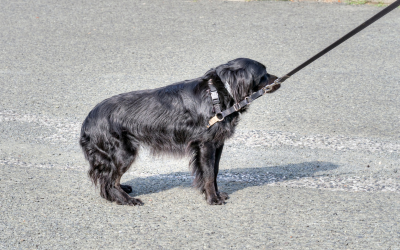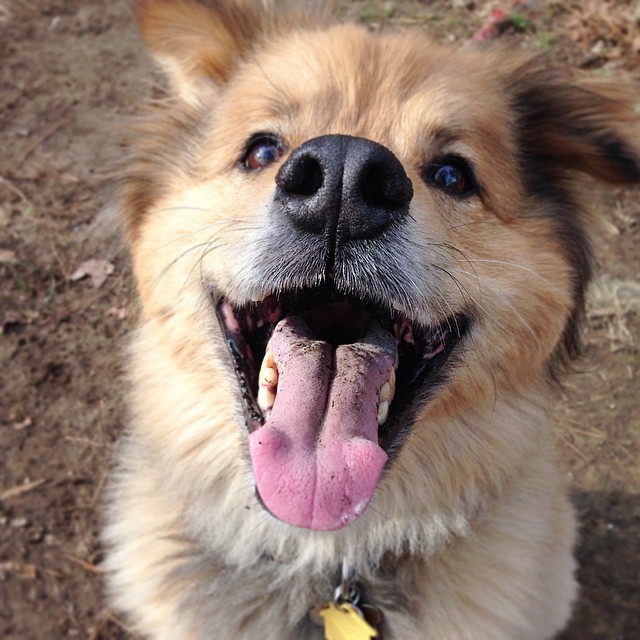One of the most common things I hear from new clients is: “My dog is protective of me.”
When a dog growls, barks, or snaps at strangers, it’s easy to assume they’re keeping you safe. If they’ve positioned themselves between you and a perceived threat, it looks just like your dog is being loyal and brave. And that’s what a good dog does, right?
Maybe It’s Fear, Not Loyalty
In most cases, your dog is not acting out of heroism. They are reacting to fear, anxiety, or frustration. What we often see is defensive or fear-based aggression. The behavior is your dog’s way of saying, “Please don’t come closer.”
It might look brave, but remember, the best defense is often a good offense. Your dog is likely trying to protect themselves, and you just happen to be their safe person standing nearby.
Fear-Based Aggression vs. Resource Guarding
Understanding what is driving the behavior can help you respond more effectively.
Fear-Based Aggression
This kind of behavior is rooted in anxiety or discomfort. Dogs may growl, bark, lunge, or snap to create space between themselves and whatever they perceive as unsafe.
Resource Guarding
This is different. It involves protecting something the dog finds valuable, like food, toys, beds, or even a person. The dog is saying, “This is mine. Stay away.”
When It Looks Like Guarding But Isn’t
Sometimes dogs appear to be guarding, but something else is going on:
- Fear: A dog growling or barking may be trying to create distance from something they find scary.
- Barrier frustration: Dogs who bark or lunge behind fences, in cars, or on leash may be frustrated because they want to greet but can’t.
- Confinement stress: Behaviors sometimes referred to as “lap guarding” or “doorway guarding” may actually reflect a dog feeling trapped or overwhelmed.
- Learned aggression: Dogs do what works. If growling, barking, or snapping has successfully made a person or animal move away in the past, the dog is likely to use that behavior again. It’s not necessarily guarding; it’s a learned survival strategy.
When Might a Dog Guard a Person or Space?
True “person guarding” is relatively rare, but it can happen. It usually involves resource guarding, not protection in the noble sense. The dog sees the person, or the area around them, as a resource they don’t want to share.
Common situations include:
- Lap guarding: Growling or snapping when someone approaches while the dog is resting on their person’s lap.
- Couch or bed guarding: Defensiveness when the dog is lying near a favorite person.
- Room or doorway guarding: Blocking or growling at others entering a space where the dog is with their person.
- Jealousy-like behavior: Reacting when their person gives attention to someone else, such as another dog or family member.
- Self-guarding: This presents as intolerance to handling, or typical resource guarding behaviors when approached.
In these cases, the dog is not protecting you. They are trying to maintain exclusive access to you or something near you.
Breed Influence
Certain breeds were explicitly developed for guarding livestock, homes, and territory. These dogs may be more prone to guarding and controlling behaviors. Any dog, regardless of breed, can develop guarding tendencies, especially if they feel unsure, stressed, or insecure in their environment.
Do Dogs Ever Truly Protect Us?
There are dogs who have instinctively stepped in during emergencies, startled off intruders, or even protected children from harm. However, genuine protective behavior is rare and often context-specific.
Dogs trained for protection work undergo extensive preparation to know when and how to respond appropriately. Most family dogs who react aggressively to strangers or situations are trying to control what feels threatening.
What You Can Do
You don’t have to know exactly whether it’s fear, guarding, or frustration to start helping your dog. What matters is recognizing that these behaviors are a form of communication, not a sign of dominance, stubbornness, or defiance.
Suppressing the behavior is not the same as addressing it. Punishing growling or barking may suppress warnings and increase the risk of bites. Instead, we want to address the underlying emotion to help your dog feel safer and more confident through:
- Management to reduce exposure to triggers
- A behavior plan to help your dog associate triggers with positive outcomes and build comfort gradually
- Professional guidance from a certified behavior consultant or experienced, educated, science-based trainer.
Need help figuring out what is going on?
I offer virtual behavior consults, so no matter where you are, I can help.


